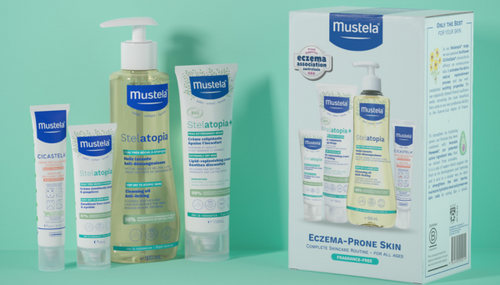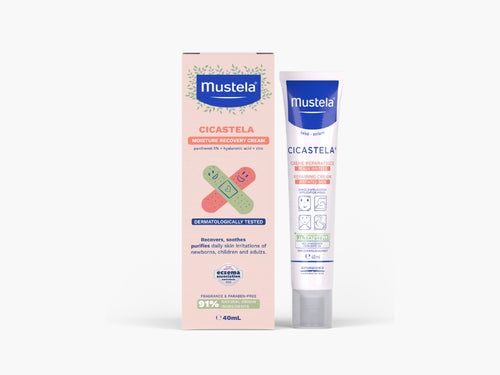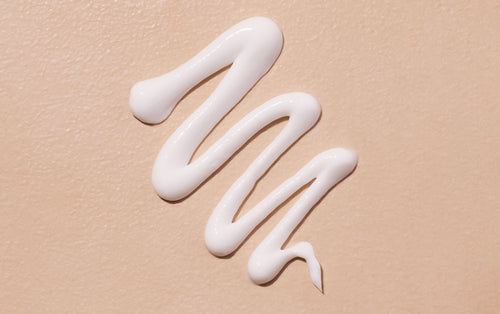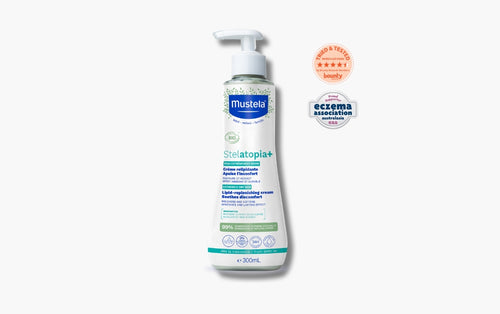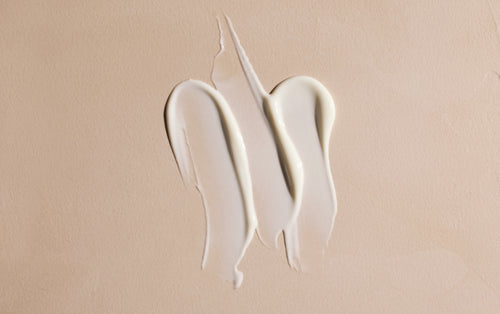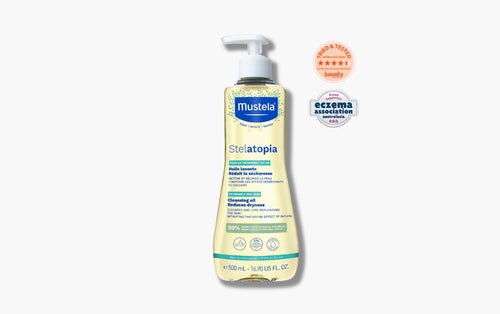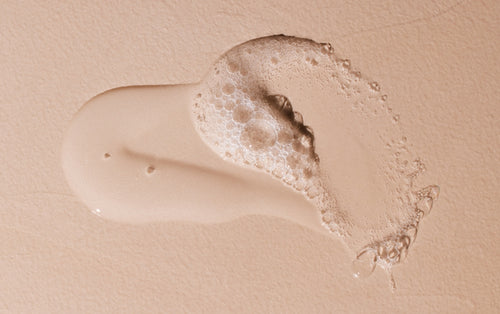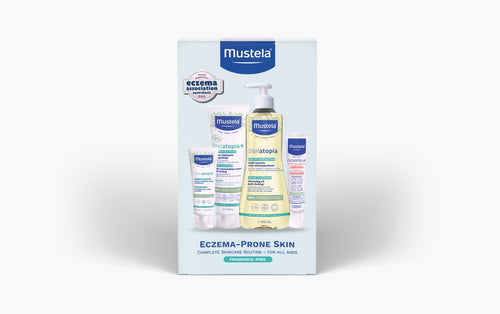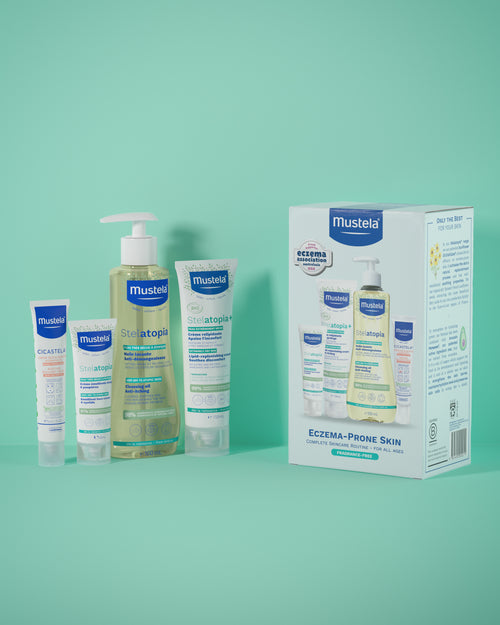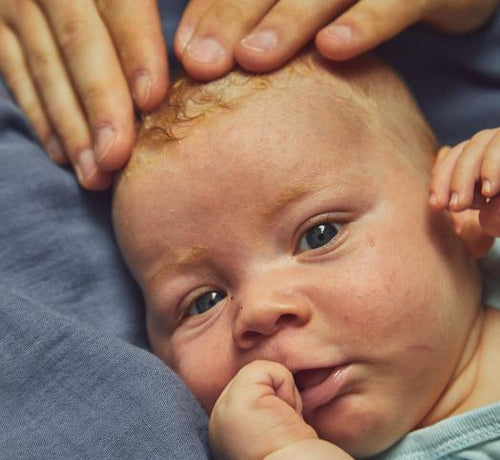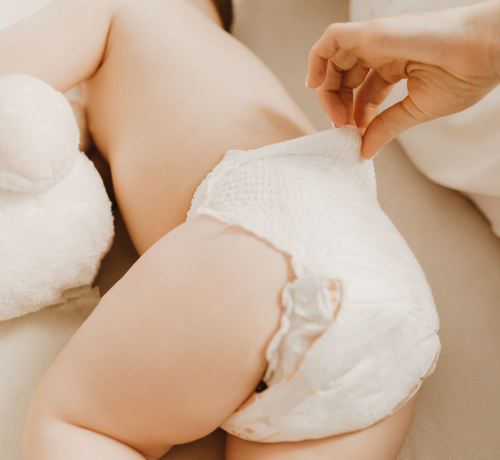Eczema-prone skin affects 1child in 3 in Australia. If the signs of this eczema are unpleasant (redness, itching sensations, dryness...), they are not rare, nor contagious to other children, and not irreversible.
More precisely, eczema-prone skin symptoms can appear by the age of two months (sometimes even earlier) and can decrease or disappear at around five or six years old. In the meantime, don't worry: some care and a little attention can and will soothe your baby (read up on Eczema: how can you prevent its appearance?).
What is eczema?
Let's start at the beginning. Where does it come from?
It comes from a combination of two key factors: a highly reactive immune system and dehydrated skin.
We talk about eczema-prone skin when the immune system responds excessively when it is in contact with allergens or other environmental situations.
Atopic dermatitis, also known as eczema, is a long-term skin condition that results in dryness, redness, itching, and sometimes infection.
Most people imagine itchy, red, dry, scaly, or thickened skin when thinking about atopic-prone skin. Rashes and dryness are usually found in the creases of the elbows, behind the knees, and across the ankles. They may also involve the face, ears, and neck. This form of eczema usually improves with age.
Eczema symptoms may be less visible in people with medium to darker skin tones. Their skin may appear brown, purple, or ashen instead.
Additionally, those with brown and Black skin are more prone to developing small bumps on their torso, arms, and legs. While this condition is common in children, it can also affect adults. Indeed, about 10% of people will experience eczema at some point in their life, as per the National Eczema Association.
When symptoms worsen, it is called an eczema flare-up, which can occur for various reasons and not just due to a single factor. Irritants can trigger eczema flare-ups or can happen without any apparent reason. People with eczema often have other atopic conditions, such as allergic rhinitis, dust mite allergy, and food allergy.
However, unlike these conditions, allergens are not typically the direct cause of eczema symptoms. Atopy is a general term for skin inflammation, and although a family history of allergy can increase the risk of developing eczema, the exact reasons why some people develop the condition are not fully understood.
The likelihood that a child will develop eczema-prone skin increases significantly if one or both parents are atopic, with a 40-50% chance when one parent is affected and a 50-80% chance when both parents are concerned.
It's important to note that eczema symptoms can be mistaken for psoriasis, a different skin condition. To learn more about the differences between eczema and psoriasis, click here.
There are seven types of eczema: atopic dermatitis, contact dermatitis, dyshidrotic eczema, neurodermatitis, nummular eczema, seborrheic dermatitis, and stasis dermatitis. For an overview of the different types of eczema, click here.
What is eczema-prone skin, and how can it be soothed?
The skin produces a protective surface layer known as a hydrolipidic film. This layer is composed of water and oils (lipids).
The epidermis also produces filaggrin, which helps the skin maintain permeability. When the levels of lipids or filaggrin are too low, the skin cannot hold the water in and becomes less effective at protecting it from external elements. This means that allergens can enter the body more easily.
In brief, excessive immune system reaction + dry skin = eczema-prone skin if there are allergens or particular environmental situations. This results in more or less inflammatory red patches (see Does my baby have eczema-prone skin?).
When the skin itches and is irritated, it can affect the well-being of the youngest, especially their sleep quality. However, eczema-prone skin doesn't disrupt their lives every day. Between two flare-ups, there are some periods of respite that you can lengthen using simple daily precautions.
What is the scratch and itch cycle of eczema?
The scratch and itch cycle of eczema can cause discomfort, disrupt sleep, and impact the quality of life. Due to the skin's inability to retain moisture well in individuals with eczema, it dries out quickly, leaving it vulnerable to allergens and irritants that can stimulate the release of chemicals and lead to itchiness. Scratching further stimulates the release of chemicals, which intensifies the itchiness.
The scratch and itch cycle can be avoided if eczema is well managed. It is, therefore, essential to keep skin prone to eczema well moisturised by using moisturising creams. The discomfort of skin irritation can significantly reduce the well-being of children, particularly in terms of their sleep. Although eczema-prone skin can cause persistent issues, there are moments of relief that can be prolonged through simple preventative measures. The skin every day. It is expected to experience unpleasant symptoms such as redness, itching, and dryness associated with this eczema, but it is neither contagious to other children nor permanent.
How to soothe Eczema-prone skin?
To prevent eczema flare-ups, keeping the skin well-moisturised daily is crucial.
- Moisturisers, like our Stelatopia+ Lipid Replenishing Cream, add moisture to the skin and create a barrier to prevent moisture loss. If the skin's protective barrier is compromised, eczema can develop.
- Apply a fragrance-free moisturiser to the face, like our Stelatopia Emollient face cream, and body twice daily. You should avoid using moisturisers that contain food proteins, such as goat milk, wheat germ, and nut oils.
- After bathing in lukewarm water, pat the skin dry and apply moisturiser. Use a non-soap-based wash or oil, and avoid soap and other foaming products that can dry out the skin.
Rinse off, and don't forget to apply moisturiser after swimming, particularly in chlorinated pools.


